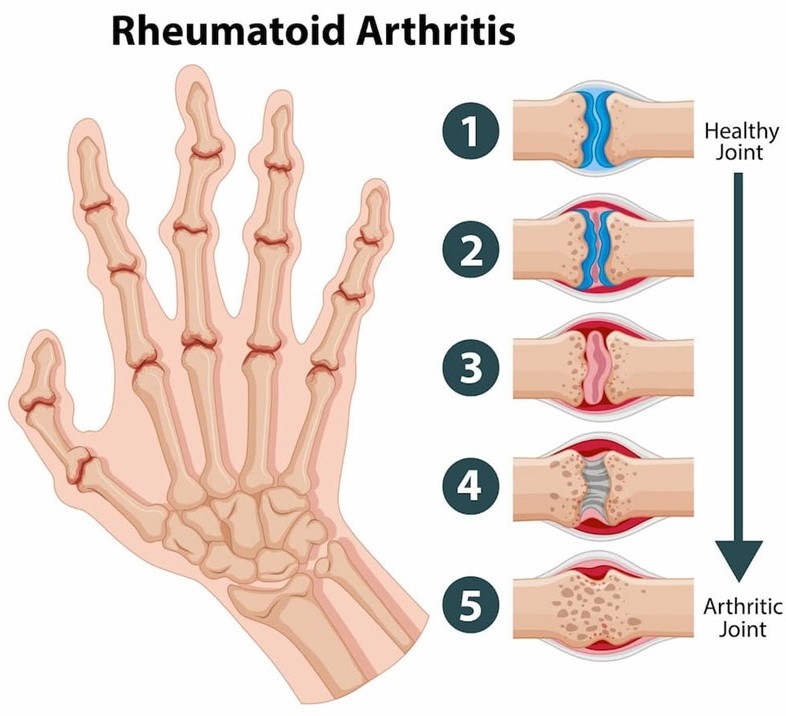Meningitis is an inflammation of the meninges (the protective membranes that cover the brain and spinal cord) caused by an infection. The inflammation can cause damage to the brain and spinal cord.
Meninges are the three protective membranes that surround and enclose the brain and spinal cord: the dura (dura mater), the arachnoid, and the pia mater. The dura is the tough, fibrous outermost membrane. The arachnoid is the fine, delicate middle membrane. The pia mater is the delicate innermost membrane.
Meningitis may involve the dura called pachymeningitis, or the leptomeninges (pia-arachnoid) termed leptomeningitis. The leptomeningitis is more common, and unless specified meningitis would mean leptomeningitis.
Pachymeningitis is an extension of the inflammation from chronic otitis media or from fracture of the skull. An abscess may form between the bone and dura.
Leptomeningitis, commonly called meningitis, is usually the result of infection but infrequently chemical meningitis and carcinomatous meningitis by infiltration of the subarachnoid space by cancer cells may occur. Infectious meningitis is broadly classified into 3 types: acute pyogenic, acute lymphocytic (viral, aseptic) and chronic (bacterial or fungal).
Acute Bacterial Meningitis
Bacterial meningitis is less common but more serious and should be treated as a medical emergency. Without treatment, bacterial meningitis can cause severe brain damage and is potentially life-threatening. The bacteria that cause meningitis can also cause septicaemia (blood poisoning).
ETIOPATHOGENESIS
The causative organism-
1. Escherichia coli infection is common in neonates with neural tube defects.
2. Haemophilus influenzae is commonly responsible for infection in infants and children.
3. Neisseria meningitidis causes meningitis in adolescent and young adults and is causative for epidemic meningitis.
4. Streptococcus pneumoniae is causative for infection at extremes of age.
MORPHOLOGIC FEATURES
→Pus accumulates in the subarachnoid space so that normally clear CSF becomes turbid. The turbid fluid is particularly seen in the sulci and at the base of the brain where the space is wide.
→Ventriculitis
→Microscopically, there is presence of numerous polymorphonuclear neutrophils in the subarachnoid space as well as in the meninges, particularly around the blood vessels.
→Gram-staining reveals varying number of causative bacteria.
Viral meningitis
Viral meningitis (also known as viral meningo-encephalitis) is the most common, and less serious, form of meningitis. It has mild symptoms and therefore many cases are hard to diagnose. It is not life threatening and followed by complete recovery.
It is most prevalent in children and young adults and more widespread during summer.
The main viruses that can cause meningitis are:
- enteroviruses
- mumps and measles
- glandular fever
- herpes simplex virus
- human immunodeficiency virus (HIV)
- cytomegalovirus (CMV)
- flaviviruses
- Epstein–Barr virus
MORPHOLOGIC FEATURES
Swelling of the brain in some cases.
Microscopically, there is mild lymphocytic infiltrate in the leptomeninges.
Chronic Meningitis
There are two principal types of chronic meningitis—one bacterial (tuberculous meningitis) and the other fungal.
→Tuberculous meningitis occurs in children and adults through vascular spread of infection from tuberculosis elsewhere in the body.
→Fungal meningitis is rare and usually only affects if the immune system of a patient has been weakened, for example, in diabetes or HIV, or very elderly people. It is sudden and fatal.
MORPHOLOGIC FEATURES
Grossly, in tuberculous meningitis, the subarachnoid space contains thick exudate.
Tubercles, 1-2 mm in diameter, may be visible.
The exudate in fungal meningitis is scanty, translucent, and gelatinous.
Symptoms of meningitis
TThe initial symptoms of meningitis can be similar to the symptoms of flu:
- headache
- fever (high body temperature)
- tiredness and irritability
- general feeling of being unwell
Patient may also experience nausea (feeling sick), vomiting (being sick), diarrhoea, and other symptoms such as a sore throat.
After the initial symptoms, in more serious cases of meningitis patient might experience:
neck stiffness (in case of moderate to severe meningitis, you will not be able to touch your chest with chin)
severe headache
a rash of either small red / purple spots or large purple / black bruises that does not whiten or disappear when pressed (a simple test is to press a glass against the rash)
sensitivity to bright light (photophobia)
sensitivity to bright light (photophobia)








